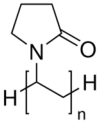Review on 3D Printing Filaments Used in Fused Deposition Modeling Method for Dermatological Preparations
- PMID: 40509301
- PMCID: PMC12156942
- DOI: 10.3390/molecules30112411
Review on 3D Printing Filaments Used in Fused Deposition Modeling Method for Dermatological Preparations
Abstract
Three-dimensional printing, particularly Fused Deposition Modeling (FDM), has revolutionized dermatological drug delivery by offering the ability to create personalized and precise drug formulations. This technology enables the design of customized drug delivery systems using a variety of polymers, such as Polylactic Acid (PLA), Polyvinyl Alcohol (PVA), Polyethylene Glycol (PEG), and Polycaprolactone (PCL), each with unique properties that enhance drug release, patient compliance, and treatment efficacy. This review analyzes these polymers in terms of their advantages, limitations, and suitability for dermatological applications. The ability to tailor these materials offers significant potential in overcoming treatment regimens. Additionally, the customization of three-dimensional-printed drug delivery systems provides a platform for creating patient-specific solutions that are more effective and adaptable to individual needs. Despite challenges such as moisture sensitivity and mechanical brittleness, the potential of FDM technology to improve dermatological treatments remains promising. The future of three-dimensional printing in dermatology lies in the integration of optimized materials and advanced printing techniques, which could further enhance patient-specific care and broaden the clinical applicability of these technologies in the pharmaceutical and biomedical sectors. By addressing these limitations and expanding material choices, FDM-based drug delivery systems have the potential to revolutionize the management of dermatological conditions, offering improved therapeutic outcomes and quality of life for patients.
Keywords: 3D printing; dermatology preparations; filaments; fused deposition modeling (FDM); polymers; topical.
Conflict of interest statement
The authors declare that they have no competing interests.
Figures












Similar articles
-
A 3D printed bilayer oral solid dosage form combining metformin for prolonged and glimepiride for immediate drug delivery.Eur J Pharm Sci. 2018 Jul 30;120:40-52. doi: 10.1016/j.ejps.2018.04.020. Epub 2018 Apr 17. Eur J Pharm Sci. 2018. PMID: 29678613
-
3D scanning and 3D printing as innovative technologies for fabricating personalized topical drug delivery systems.J Control Release. 2016 Jul 28;234:41-8. doi: 10.1016/j.jconrel.2016.05.034. Epub 2016 May 14. J Control Release. 2016. PMID: 27189134
-
Role of Polymers in 3D Printing Technology for Drug Delivery - An Overview.Curr Pharm Des. 2018;24(42):4979-4990. doi: 10.2174/1381612825666181226160040. Curr Pharm Des. 2018. PMID: 30585543 Review.
-
An investigation into the use of polymer blends to improve the printability of and regulate drug release from pharmaceutical solid dispersions prepared via fused deposition modeling (FDM) 3D printing.Eur J Pharm Biopharm. 2016 Nov;108:111-125. doi: 10.1016/j.ejpb.2016.08.016. Epub 2016 Sep 2. Eur J Pharm Biopharm. 2016. PMID: 27594210
-
3D printing in personalized drug delivery: An overview of hot-melt extrusion-based fused deposition modeling.Int J Pharm. 2021 May 1;600:120501. doi: 10.1016/j.ijpharm.2021.120501. Epub 2021 Mar 19. Int J Pharm. 2021. PMID: 33746011 Free PMC article. Review.
Cited by
-
Low Phase Noise, Dual-Frequency Pierce MEMS Oscillators with Direct Print Additively Manufactured Amplifier Circuits.Micromachines (Basel). 2025 Jun 26;16(7):755. doi: 10.3390/mi16070755. Micromachines (Basel). 2025. PMID: 40731663 Free PMC article.
References
-
- Jakus A.E. 3D Printing in Orthopaedic Surgery. Elsevier; Amsterdam, The Netherlands: 2019. An introduction to 3D printing—Past, present, and future promise; pp. 1–15. - DOI
-
- Hay R.J., Johns N.E., Williams H.C., Bolliger I.W., Dellavalle R.P., Margolis D.J., Marks R., Naldi L., Weinstock M.A., Wulf S.K., et al. The global burden of skin disease in 2010: An analysis of the prevalence and impact of skin conditions. J. Investig. Dermatol. 2014;134:1527–1534. doi: 10.1038/jid.2013.446. - DOI - PubMed
Publication types
MeSH terms
Substances
LinkOut - more resources
Full Text Sources
Miscellaneous

